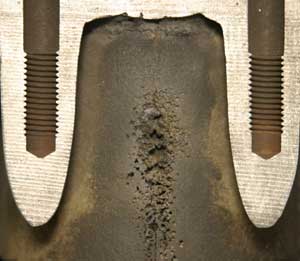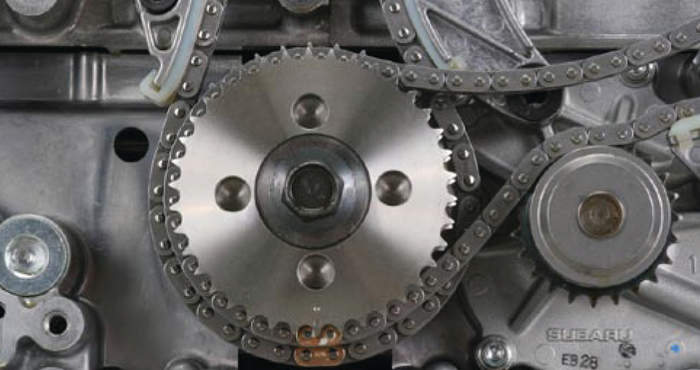 Cavitation is an issue that has plagued the diesel engine for years. One of the main concerns created by cavitation is the erosion of the metal on the outside surface of cylinder liners. Tiny air bubbles are formed during normal engine operation and implode at an extremely high temperature and pressure and eat into the wall of the cylinder (see Figure 1). This erosion eventually penetrates the cylinder wall allowing coolant to enter, contaminating the oil or even causing the engine to hydrolock. The liner O-rings are also effected by cavitation as well, and can erode or become brittle and break away.
Cavitation is an issue that has plagued the diesel engine for years. One of the main concerns created by cavitation is the erosion of the metal on the outside surface of cylinder liners. Tiny air bubbles are formed during normal engine operation and implode at an extremely high temperature and pressure and eat into the wall of the cylinder (see Figure 1). This erosion eventually penetrates the cylinder wall allowing coolant to enter, contaminating the oil or even causing the engine to hydrolock. The liner O-rings are also effected by cavitation as well, and can erode or become brittle and break away.
Jasper Engines & Transmissions reminds technicians that supplemental coolant additives (SCA’s), and their concentrations, are important to help minimize this damage. These additives help by coating the surfaces that contact coolant with Nitrites. SCA additives also provide pH control to help fight corrosion, and soften the water to help stop mineral deposits from forming. The proper levels must be maintained in your engine, or it will fail prematurely.
You must be sure to check the levels of your additive package two times per year and test your coolant for replacement once each year.
For more information on the remanufactured diesel engines of Jasper Engines & Transmissions, call (800) 827-7455 or log onto www.jasperengines.com.













